Advances in Atherosclerosis Theranostics Harnessing Iron Oxide-Based Nanoparticles
- PMID: 38368274
- PMCID: PMC11077671
- DOI: 10.1002/advs.202308298
Advances in Atherosclerosis Theranostics Harnessing Iron Oxide-Based Nanoparticles
Abstract
Atherosclerosis, a multifaceted chronic inflammatory disease, has a profound impact on cardiovascular health. However, the critical limitations of atherosclerosis management include the delayed detection of advanced stages, the intricate assessment of plaque stability, and the absence of efficacious therapeutic strategies. Nanotheranostic based on nanotechnology offers a novel paradigm for addressing these challenges by amalgamating advanced imaging capabilities with targeted therapeutic interventions. Meanwhile, iron oxide nanoparticles have emerged as compelling candidates for theranostic applications in atherosclerosis due to their magnetic resonance imaging capability and biosafety. This review delineates the current state and prospects of iron oxide nanoparticle-based nanotheranostics in the realm of atherosclerosis, including pivotal aspects of atherosclerosis development, the pertinent targeting strategies involved in disease pathogenesis, and the diagnostic and therapeutic roles of iron oxide nanoparticles. Furthermore, this review provides a comprehensive overview of theranostic nanomedicine approaches employing iron oxide nanoparticles, encompassing chemical therapy, physical stimulation therapy, and biological therapy. Finally, this review proposes and discusses the challenges and prospects associated with translating these innovative strategies into clinically viable anti-atherosclerosis interventions. In conclusion, this review offers new insights into the future of atherosclerosis theranostic, showcasing the remarkable potential of iron oxide-based nanoparticles as versatile tools in the battle against atherosclerosis.
Keywords: atherosclerosis; iron oxide nanoparticles; nanomedicines; theranostics.
© 2024 The Authors. Advanced Science published by Wiley‐VCH GmbH.
Conflict of interest statement
The authors declare no conflict of interest.
Figures
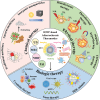

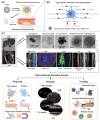
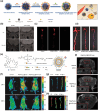
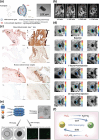

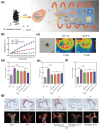
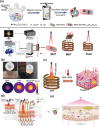
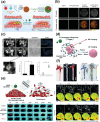
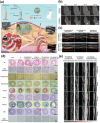



Similar articles
-
Iron oxide nanoparticles: Diagnostic, therapeutic and theranostic applications.Adv Drug Deliv Rev. 2019 Jan 1;138:302-325. doi: 10.1016/j.addr.2019.01.005. Epub 2019 Jan 11. Adv Drug Deliv Rev. 2019. PMID: 30639256 Free PMC article. Review.
-
Iron Oxide Nanoparticles as Imaging and Therapeutic Agents for Atherosclerosis.Semin Thromb Hemost. 2020 Jul;46(5):553-562. doi: 10.1055/s-0039-3400247. Epub 2020 Jun 30. Semin Thromb Hemost. 2020. PMID: 32604419 Review.
-
How Advanced Is Nanomedicine for Atherosclerosis?Int J Nanomedicine. 2025 Mar 17;20:3445-3470. doi: 10.2147/IJN.S508757. eCollection 2025. Int J Nanomedicine. 2025. PMID: 40125442 Free PMC article. Review.
-
Magnetic nanoparticles for precision oncology: theranostic magnetic iron oxide nanoparticles for image-guided and targeted cancer therapy.Nanomedicine (Lond). 2017 Jan;12(1):73-87. doi: 10.2217/nnm-2016-0316. Epub 2016 Nov 23. Nanomedicine (Lond). 2017. PMID: 27876448 Free PMC article. Review.
-
Construction of iron oxide nanoparticle-based hybrid platforms for tumor imaging and therapy.Chem Soc Rev. 2018 Mar 5;47(5):1874-1900. doi: 10.1039/c7cs00657h. Chem Soc Rev. 2018. PMID: 29376542 Review.
Cited by
-
Photodynamic Therapy for Atherosclerosis: Past, Present, and Future.Pharmaceutics. 2024 May 29;16(6):729. doi: 10.3390/pharmaceutics16060729. Pharmaceutics. 2024. PMID: 38931851 Free PMC article. Review.
-
Advances in nanomaterials for precision drug delivery: Insights into pharmacokinetics and toxicity.Bioimpacts. 2024 Nov 2;15:30573. doi: 10.34172/bi.30573. eCollection 2025. Bioimpacts. 2024. PMID: 40256227 Free PMC article. Review.
-
Spermine delivered by ZIF90 nanoparticles alleviates atherosclerosis by targeted inhibition of macrophage ferroptosis in plaque.J Nanobiotechnology. 2025 Mar 4;23(1):165. doi: 10.1186/s12951-025-03271-8. J Nanobiotechnology. 2025. PMID: 40038689 Free PMC article.
-
Biosynthesis of iron oxide nanoparticles (FeONPs) using Merremia quinquefolia (L.) Hallier f. leaf extract; Their antibacterial, antioxidant, anti-inflammatory, anticancer activity on against MCF-7 breast cancer cell lines and Photocatalytic degradation.3 Biotech. 2025 Jul;15(7):202. doi: 10.1007/s13205-025-04338-x. Epub 2025 Jun 4. 3 Biotech. 2025. PMID: 40487786
-
Recent Advances in Nanozymes for the Treatment of Atherosclerosis.Int J Nanomedicine. 2025 Jul 29;20:9447-9472. doi: 10.2147/IJN.S540010. eCollection 2025. Int J Nanomedicine. 2025. PMID: 40755466 Free PMC article. Review.
References
-
- a) Tsao C. W., Aday A. W., Almarzooq Z. I., Anderson C. A. M., Arora P., Avery C. L., Baker‐Smith C. M., Beaton A. Z., Boehme A. K., Buxton A. E., Commodore‐Mensah Y., Elkind M. S. V., Evenson K. R., Eze‐Nliam C., Fugar S., Generoso G., Heard D. G., Hiremath S., Ho J. E., Kalani R., Kazi D. S., Ko D., Levine D. A., Liu J., Ma J., Magnani J. W., Michos E. D., Mussolino M. E., Navaneethan S. D., Parikh N. I., et al., Circulation 2023, 147, e93; - PubMed
- b) Jebari‐Benslaiman S., Galicia‐Garcia U., Larrea‐Sebal A., Olaetxea J. R., Alloza I., Vandenbroeck K., Benito‐Vicente A., Martin C., Int. J. Mol. Sci. 2022, 23, 3346. - PMC - PubMed
-
- a) Mantovani A., Ballestri S., Lonardo A., Targher G., Dig. Dis. Sci. 2016, 61, 1246; - PubMed
- b) Libby P., Pasterkamp G., Crea F., Jang I. K., Circ. Res. 2019, 124, 150; - PMC - PubMed
- c) Falk E., Nakano M., Bentzon J. F., Finn A. V., Virmani R., Eur. Heart J. 2013, 34, 719; - PubMed
- d) Banerjee C., Chimowitz M. I., Circ. Res. 2017, 120, 502. - PMC - PubMed
-
- Sugamata W., Nakamura T., Uematsu M., Kitta Y., Fujioka D., Saito Y., Kawabata K., Obata J. E., Watanabe Y., Watanabe K., Kugiyama K., J. Cardiol. 2014, 64, 179. - PubMed
-
- Song Y., Jing H., Vong L. B., Wang J., Li N., Chin. Chem. Lett. 2022, 33, 1705.
Publication types
MeSH terms
Substances
Grants and funding
LinkOut - more resources
Full Text Sources
Medical
